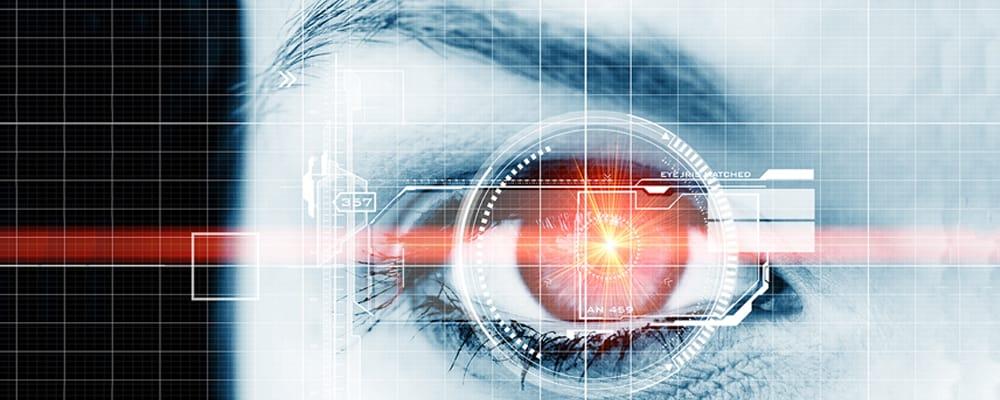
The Difference Between Connected Devices that Simply Look Cool and Those that Truly Improve Your Life Lies in the User Experience
For connected IoT devices — including smart home and medical devices — to be truly transformative they need to deliver a well-designed and intuitive user experience.
Running. It’s my thing. My favorite form of exercise. A way to clear my head. Usually, running loves me as much as I love it. But not always. On a rainy day a few months back, while training indoors for a road race, I got into an altercation with a treadmill.
Treadmill 1. Meniscus 0.
Fast forward to April when I finally gave into the pain and went under the knife. My recovery had me couch-bound with just my Norwegian Elkhund and Netflix for company. That meant nobody to do even the simple things for me like turn on the lights.
It's been years since I was last stuck at home recuperating, and I’m struck by how much technology has advanced. This time around, I had a far greater level of independence for accomplishing routine tasks thanks to the Internet of Things (IoT) and all the smart-home connected devices I’ve integrated into my living space.
While I’m not quite up to the level of Tony Stark and his buddy J.A.R.V.I.S. — yet — I’ve found that Alexa makes a passable assistant. Being able to turn the lights on or off in the next room hands free is definitely a good thing for someone hobbling around on crutches. And really, being able to adjust controls like lights or thermostat by voice is just plain fun.
But for many people, this type of voice control is more than fun. It’s life-changing.
A connected-home ecosystem of smart devices would be advantageous to people with disabilities. But for a device — especially a medical device — to be truly functional and beneficial, far greater attention needs to be given to the user experience (UX).
Mediocre UX Design Limits Promise of IoT Devices
I saw this during my rehab. Good devices — helpful devices — that could have been exponentially better with just a little more attention paid to the UX. For me, the deficit was mostly a nuisance. But, for someone with a permanent or significantly limiting disability — someone who truly relies on connected devices to handle activities of daily living — low-performance UX is a serious concern.
Here’s what I mean. My colleague Selene Chilton’s uncle was diagnosed with ALS about 10 years ago. He lost his mobility permanently and his ability to speak temporarily, so connected and assistive technologies were instrumental in his day-to-day life.
“The tech that had the greatest impact on my uncle’s quality of life was the EyeTracker Assistive Technology, which works by using sensors to track and follow the user’s pupils to type messages using an on-screen keyboard,” Chilton said. The EyeTracker also can vocalize those messages, and function as a computer. In addition, it integrates smart-home technology for handling tasks like making phone calls or controlling the tv.
“Thanks to the EyeTracker system, my uncle was able to regain some of his independence so he could participate in the world around him, perform simple tasks and stay connected to the people who mattered most to him,” Chilton said. “Even better, he was able to accomplish these activities himself, which was of monumental importance to him and our family. It helped keep morale high.”
“But though EyeTracker offered many benefits — it provided my aunt with peace of mind knowing my uncle was able to call or message for assistance, and it helped his nursing team deliver quality care by taking the guesswork out of what he needed — its benefit was severely limited because of some major flaws, particularly related to UX,” she said.
For example, its interface was ugly and unpleasant. “The blinding white screen fatigued my uncle’s eyes and caused sensitivity to light, while the iconography was confusing and dated, which made it unappealing to work with,” Chilton said. “The bulky surround blocked his sightlines and constantly got in the way of his nurses. Worse, the device froze often, making it unreliable and unsettling for my uncle and the family to depend on.”
Essentially, poor UX took away the independence the device was supposed to grant.
Promise Unfulfilled, So Far
As technologists, much of the work we do is (or at least should be) geared toward improving the lives of those around us. Using sensors, actuators and interconnected devices to help people manage the world around them is a huge achievement. A mere 10 years ago, voice-controlled systems were the realm of science fiction, but today they’re accessible for less than 50 bucks!
Just think about some of the things we can do now in the age of the connected-device:
- Voice-controlled media, heating systems, cooling systems, fans, doors, lights etc.
- Smartphone/iPad access to control media, phone, HVAC systems, window blinds, doorbell video feeds, etc.
- Appliances that turn off automatically when unattended for a set period of time
- Sensors in the fridge or pantry to detect when items are low and either add them to a shopping list or arrange to have them delivered
- Reminders for taking medication on schedule, with sensors that tell if doses are missed
As these types of home-control technologies mature, and more sophisticated assistive tech and medical devices like eye-tracking systems and brain computer interfaces become more readily available, people with severe disabilities can more easily maintain a higher quality of life.
Still, to be truly beneficial greater emphasis must be placed on UX and not just on the novelty of connecting every gadget in the house. That’s where companies like ICS come in. We’re committed to building intuitive connected devices for consumer and medical applications that deliver an exceptional user experience that can really enhance quality of life.
If you’re thinking about building a connected medical or consumer device, get in touch at info@ics.com.